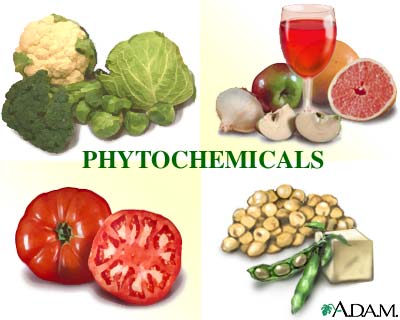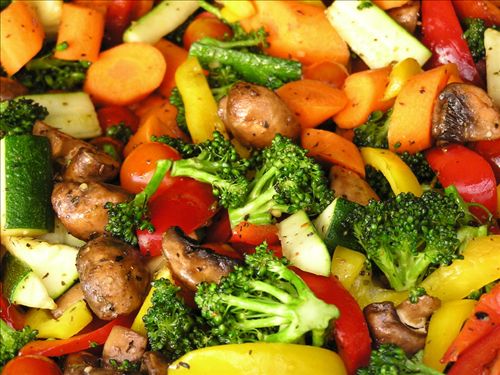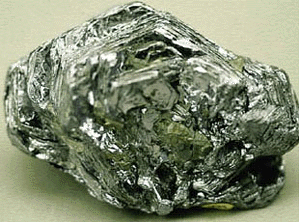
If your diet provides enough minerals to meet the RDAs, you’re in pretty good shape most of the time. But a restrictive diet, the circumstances of your reproductive life, and just plain getting older can increase your need for minerals. Here are some scenarios.
You’re a strict vegetarian
Vegetarians who pass up fish, meat, and poultry must get their iron either from fortified grain products such as breakfast cereals or commercial breads or naturally from foods such as seeds, nuts, blackstrap molasses, raisins, prune juice, potato skins, green leafy vegetables, tofu, miso, or brewer’s yeast. Because iron in plant foods is bound into compounds that are difficult for the human body to absorb, iron supplements are pretty much standard fare. Vegans — vegetarians who avoid all foods from animals, including dairy products — have a similar problem getting the calcium they need. Calcium is in vegetables, but it, like iron, is bound into hard-to-absorb compounds. So vegans need calcium-rich substitutes. Good food choices are soybean milk fortified with calcium, orange juice with added calcium, and tofu processed with calcium sulfate.
You live inland, away from the ocean
Now here’s a story of 20th century nutritional success. Seafood and plants grown near the ocean are exposed to iodine-rich seawater. Freshwater fish, plants grown far from the sea, and the animals that feed on these fish and plants are not exposed to iodine. So people who live inland and get all their food from local gardens and farms cannot get the iodine they need from food. American savvy and technology rode to the rescue in 1924 with the introduction of iodized salt. Then came refrigerated railroad cars and trucks to carry food from both coasts to every inland city and state. Together, modern salt and efficient shipment virtually eliminated goiter, the iodine deficiency disease, in this country. Nonetheless, millions of people worldwide still suffer from chronic iodine deficiency.
You’re a man
Just as women lose iron during menstrual bleeding, men lose zinc at ejaculation. Men who are extremely active sexually may need extra zinc. The trouble is, no one has ever written down standards for what constitutes “extremely active.” Check this one out with your doctor.
Men who take a daily supplement of 200 micrograms selenium seem to cut their risk of prostate cancer by two-thirds. The selenium supplement also produces an overall drop in cancer mortality, plus a significantly lower risk of prostate cancer, colon cancer, and lung cancer in both men and women.
You’re a woman
The average woman loses about 2 to 3 teaspoons of blood during each menstrual period, a loss of 1.4 milligrams of iron. Women whose periods are very heavy lose more blood and more iron. Because getting the iron you need from a diet providing fewer than 2,000 calories a day may be virtually impossible, you may develop a mild iron deficiency. To remedy this, some doctors prescribe a daily iron supplement.
Women who use an intrauterine device (IUD) may also be given a prescription for iron supplements because IUDs irritate the lining of the uterus and cause a small but significant loss of blood and iron.
You’re pregnant
The news about pregnancy is that women may not need extra calcium. This finding, released late in 1998, is so surprising that it probably pays to stay tuned for more — and definitely check with your own doctor. Meanwhile, pregnant women still need supplements to build not only fetal tissues but also new tissues and blood vessels in their own bodies. Animal studies suggest (but don’t prove) that you may also need extra copper to protect nerve cells in the fetal brain. Nutritional supplements for pregnant women are specifically formulated to provide the extra nutrients they need.
You’re breast-feeding
Nursing mothers need extra calcium, phosphorus, magnesium, iron, zinc, and selenium to protect their own bodies while producing nutritious breast milk. The same supplements that provide extra nutrients for pregnant women will meet a nursing mother’s needs.
Wow — You think that was a hot flash?
Then you need extra calcium. Both men and women produce the sex hormones testosterone and estrogen, although men make proportionately more testosterone and women, more estrogen. Testosterone builds bone; estrogen preserves it.
At menopause, a woman’s production of estrogen drops precipitously, and her bones rapidly become less dense. As men age and their testosterone levels drop, they’re also at risk of losing bone tissue, but the loss is less rapid and dramatic than a woman’s.
For both men and woman, severe loss of bone density can lead to osteoporosis and an increased risk of bone fractures, a condition more common among women of Caucasian and Asian ancestry. Estrogen supplements can help a woman maintain bone tissue, but taking the hormone may have serious side effects, including an increased risk of breast cancer. Twenty years ago, nutritionists thought it impossible to stop age-related loss of bone density — that your body ceased to absorb calcium when you passed your mid-20s. Today, medications such as alendronate (Fosamax) protect an aging woman’s bones without estrogen’s potentially harmful effects. Increasing your consumption of calcium plus vitamin D may also be helpful, regardless of your gender. But the most recent studies — by which I mean the study released in February 2006 as I am typing these words — says the value of extra calcium may not be as high as once believed. What can I say? Stay tuned for more on this one.
 Diminished digestion and ABSORPTION can lead to deficiencies of MAGNESIUM, IRON,
Diminished digestion and ABSORPTION can lead to deficiencies of MAGNESIUM, IRON,



 A food is classified as adulterated if it contains extraneous material, dangerous amounts of poisons or filth, or if it has been processed or stored under unsanitary conditions. In terms of food for interstate commerce, the U.S. Food and Drug Administration monitors environmental contaminants, toxins from microorganisms, bacterial levels, and potentially harmful substances. Since it is impossible for food to be 100 percent pure, tolerances have been set for each type of contaminant. Very hazardous materials can be ruled so dangerous that no amount should be detected (a “zero tolerance”).
A food is classified as adulterated if it contains extraneous material, dangerous amounts of poisons or filth, or if it has been processed or stored under unsanitary conditions. In terms of food for interstate commerce, the U.S. Food and Drug Administration monitors environmental contaminants, toxins from microorganisms, bacterial levels, and potentially harmful substances. Since it is impossible for food to be 100 percent pure, tolerances have been set for each type of contaminant. Very hazardous materials can be ruled so dangerous that no amount should be detected (a “zero tolerance”).

 Addiction to refined CARBOHYDRATES in general and to sucrose (table sugar) specifically is a controversial topic. Proponents believe that sugar has no effect on behavior, and that it has little effect on health other than promoting tooth decay. A government task force concluded in 1986 that typical sugar consumption does not generally pose a health hazard. Critics contend that sugar addiction is a common phenomenon. Preferring sugar and sweets seems to be programmed at infancy. A craving for sweets often develops later in life, and in this sense sugar may be psychologically addicting. Compounding the problem of defining sugar addiction is the general observation that related symptoms are rather vague, including a change in mood or feeling shaky when abstaining from sugary foods.
Addiction to refined CARBOHYDRATES in general and to sucrose (table sugar) specifically is a controversial topic. Proponents believe that sugar has no effect on behavior, and that it has little effect on health other than promoting tooth decay. A government task force concluded in 1986 that typical sugar consumption does not generally pose a health hazard. Critics contend that sugar addiction is a common phenomenon. Preferring sugar and sweets seems to be programmed at infancy. A craving for sweets often develops later in life, and in this sense sugar may be psychologically addicting. Compounding the problem of defining sugar addiction is the general observation that related symptoms are rather vague, including a change in mood or feeling shaky when abstaining from sugary foods. A chronic condition characterized by CRAVINGS for and uncontrollable use of a substance (often drugs or alcohol) despite negative physical, mental, or social consequences. People who suffer from drug or alcohol addiction are often malnourished and may be either overweight due to an increased consumption of foods high in refined CARBOHYDRATES or underweight due to a loss of APPETITE.
A chronic condition characterized by CRAVINGS for and uncontrollable use of a substance (often drugs or alcohol) despite negative physical, mental, or social consequences. People who suffer from drug or alcohol addiction are often malnourished and may be either overweight due to an increased consumption of foods high in refined CARBOHYDRATES or underweight due to a loss of APPETITE.


 A condition characterized by a burning pain near the stomach. Typically, this occurs an hour or so after a heavy (fatty) meal and is often relieved by taking ANTACIDS or by drinking MILK. Acid indigestion is the most common gastrointestinal complaint in the United States; one in 10 Americans suffer daily attacks. The pain associated with acid indigestion is caused by STOMACH ACID backing up into the ESOPHAGUS, the region of the throat connecting the mouth with the stomach. Acid indigestion can be caused by air gulped when swallowing large bites of food, which can keep the passageway open. Some food allergies and food sensitivities may trigger acid indigestion by relaxing the sphincter muscles that normally seal off the stomach juices from the esophagus after eating. Although the stomach lining is protected from acid by mucus, the unprotected esophagus is irritated by repeated exposure to acid.
A condition characterized by a burning pain near the stomach. Typically, this occurs an hour or so after a heavy (fatty) meal and is often relieved by taking ANTACIDS or by drinking MILK. Acid indigestion is the most common gastrointestinal complaint in the United States; one in 10 Americans suffer daily attacks. The pain associated with acid indigestion is caused by STOMACH ACID backing up into the ESOPHAGUS, the region of the throat connecting the mouth with the stomach. Acid indigestion can be caused by air gulped when swallowing large bites of food, which can keep the passageway open. Some food allergies and food sensitivities may trigger acid indigestion by relaxing the sphincter muscles that normally seal off the stomach juices from the esophagus after eating. Although the stomach lining is protected from acid by mucus, the unprotected esophagus is irritated by repeated exposure to acid. Common additives that increase the acidity (lower the pH) of foods and beverages. Acidifiers provide tartness and enhance flavors of processed foods. The increased acidity inhibits the growth of microorganisms; thus acidifiers act as preservatives. Certain acidifiers can also retard spoilage by acting as antioxidants, preventing chemical changes due to oxygen. This group of additives includes ADIPIC ACID (adipate), TARTARIC ACID (tartrate), benzoic acid (benzoate), and CITRIC ACID (citrate).
Common additives that increase the acidity (lower the pH) of foods and beverages. Acidifiers provide tartness and enhance flavors of processed foods. The increased acidity inhibits the growth of microorganisms; thus acidifiers act as preservatives. Certain acidifiers can also retard spoilage by acting as antioxidants, preventing chemical changes due to oxygen. This group of additives includes ADIPIC ACID (adipate), TARTARIC ACID (tartrate), benzoic acid (benzoate), and CITRIC ACID (citrate).
 Foods that create acidic residues after they have been broken down by the body. Protein-rich food, such as EGGS, MEAT, and poultry, produce acidic residues when oxidized for energy. The combustion of sulfur-containing amino acids tends to acidify the body (acidic residue). In contrast, fruits and vegetables make the body more alkaline or basic. They contain magnesium, calcium, and potassium salts of organic acids, which yield an alkaline residue when oxidized. Fruits are accordingly classified as alkali-forming foods, even though juices and fruit taste acidic (sour). Excretion of organic acids (potential renal acid load) can be calculated for various foods based on their content of sodium, potassium, calcium, magnesium, chloride, phosphorus, and sulfur. Choosing more alkaline foods may ameliorate osteoporosis, autoimmune conditions such as rheumatoid arthritis, and chronic inflammation.
Foods that create acidic residues after they have been broken down by the body. Protein-rich food, such as EGGS, MEAT, and poultry, produce acidic residues when oxidized for energy. The combustion of sulfur-containing amino acids tends to acidify the body (acidic residue). In contrast, fruits and vegetables make the body more alkaline or basic. They contain magnesium, calcium, and potassium salts of organic acids, which yield an alkaline residue when oxidized. Fruits are accordingly classified as alkali-forming foods, even though juices and fruit taste acidic (sour). Excretion of organic acids (potential renal acid load) can be calculated for various foods based on their content of sodium, potassium, calcium, magnesium, chloride, phosphorus, and sulfur. Choosing more alkaline foods may ameliorate osteoporosis, autoimmune conditions such as rheumatoid arthritis, and chronic inflammation.
 A large family of compounds that taste sour and can neutralize bases to create salts. Strong acids like hydrochloric acid (STOMACH ACID) and sulfuric acid (battery acid) give up all of their protons in water and lower the pH, the effective hydrogen ion concentration. A pH of 7.0 is neutral, that is, neither acidic nor basic, while pH values less than 7.0 are considered acidic. Exposure to strong acids tends to damage cells and tissues. The stomach is the only organ normally exposed to strong acids, but it is protected from injury by a heavy mucous layer.
A large family of compounds that taste sour and can neutralize bases to create salts. Strong acids like hydrochloric acid (STOMACH ACID) and sulfuric acid (battery acid) give up all of their protons in water and lower the pH, the effective hydrogen ion concentration. A pH of 7.0 is neutral, that is, neither acidic nor basic, while pH values less than 7.0 are considered acidic. Exposure to strong acids tends to damage cells and tissues. The stomach is the only organ normally exposed to strong acids, but it is protected from injury by a heavy mucous layer. A condition resulting from the lack of STOMACH ACID. DIARRHEA, stomach discomfort, and bloating are common symptoms of achlorhydria, which has serious effects. It can lead to MALNUTRITION, even when the diet is well balanced, because achlorhydria drastically reduces the efficiency of DIGESTION. A chronic MALABSORPTION syndrome leads to deficiencies of VITAMIN B12, CALCIUM, IRON, and other nutrients and sets the stage for chronic FATIGUE, OSTEOPOROSIS, ANEMIA, and serious infections. Although causes of achlorhydria are unknown, lowered stomach acid production is associated with anemia, stomach inflammation, CELIAC DISEASE, diabetes, lupus, myasthenia gravis, rheumatoid ARTHRITIS, and some forms of cancer. Limited stomach acid production, not the absence of stomach acid, is termed HYPOCHLORHYDRIA. It is not as severe a condition as achlorhydria, although unless corrected, the ensuing malabsorption syndrome can have similar, detrimental longrange effects on health. In either situation patients may be advised to take supplemental hydrochloric acid in the form of BETAINE HYDROCHLORIDE or glutamic acid hydrochloride with meals to enhance digestion. These supplements should be used with medical supervision because of the danger of overdosing.
A condition resulting from the lack of STOMACH ACID. DIARRHEA, stomach discomfort, and bloating are common symptoms of achlorhydria, which has serious effects. It can lead to MALNUTRITION, even when the diet is well balanced, because achlorhydria drastically reduces the efficiency of DIGESTION. A chronic MALABSORPTION syndrome leads to deficiencies of VITAMIN B12, CALCIUM, IRON, and other nutrients and sets the stage for chronic FATIGUE, OSTEOPOROSIS, ANEMIA, and serious infections. Although causes of achlorhydria are unknown, lowered stomach acid production is associated with anemia, stomach inflammation, CELIAC DISEASE, diabetes, lupus, myasthenia gravis, rheumatoid ARTHRITIS, and some forms of cancer. Limited stomach acid production, not the absence of stomach acid, is termed HYPOCHLORHYDRIA. It is not as severe a condition as achlorhydria, although unless corrected, the ensuing malabsorption syndrome can have similar, detrimental longrange effects on health. In either situation patients may be advised to take supplemental hydrochloric acid in the form of BETAINE HYDROCHLORIDE or glutamic acid hydrochloride with meals to enhance digestion. These supplements should be used with medical supervision because of the danger of overdosing.



 Generally, the passage of liquids into solid materials and of gases into liquids and solids. In terms of nutrition, absorption refers to the passage of substances into body fluids and tissues.
Generally, the passage of liquids into solid materials and of gases into liquids and solids. In terms of nutrition, absorption refers to the passage of substances into body fluids and tissues.

















